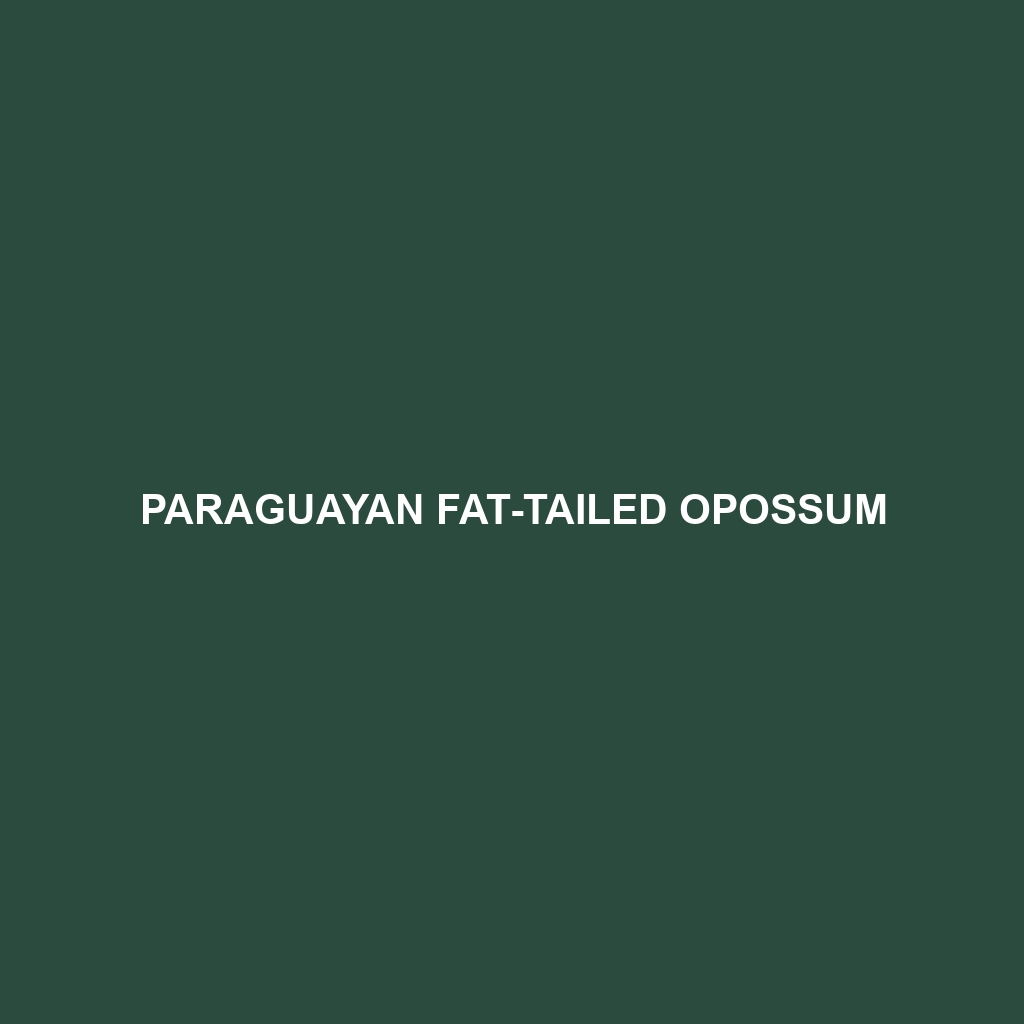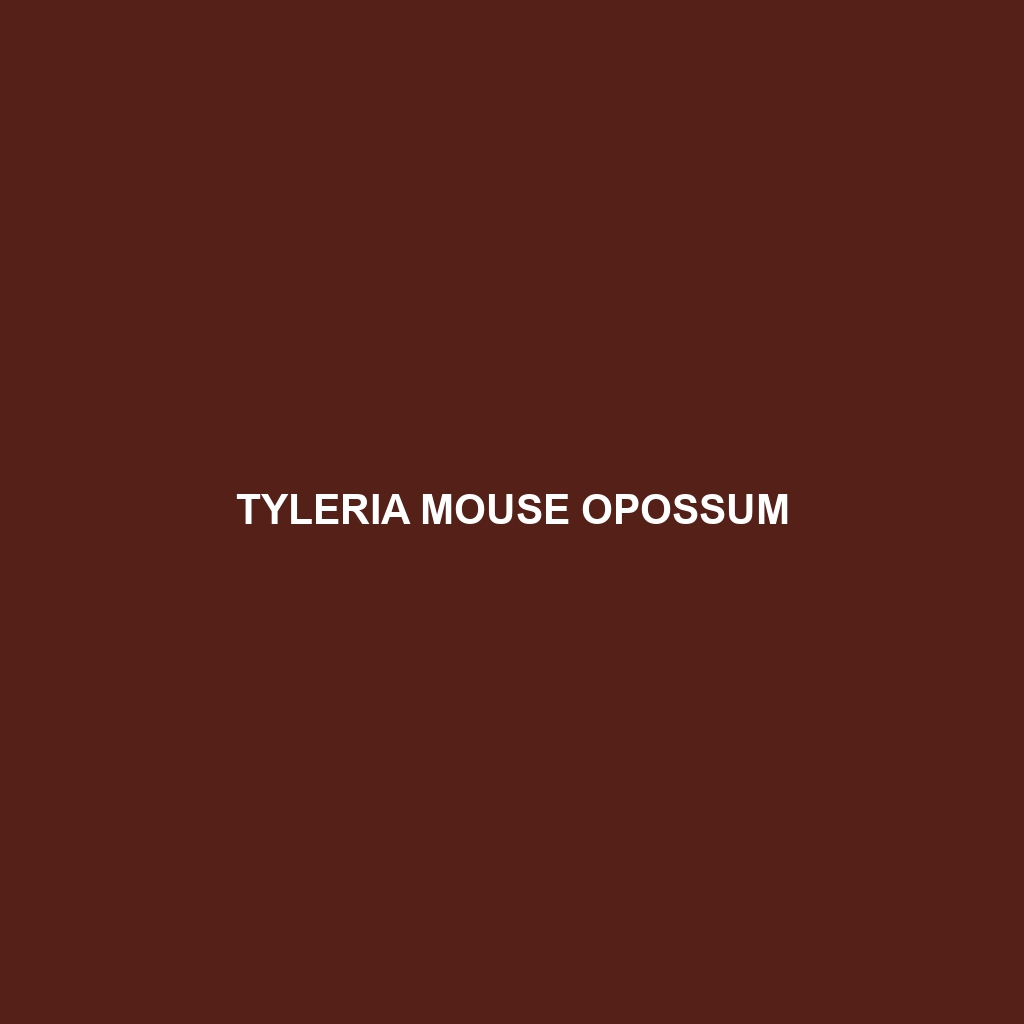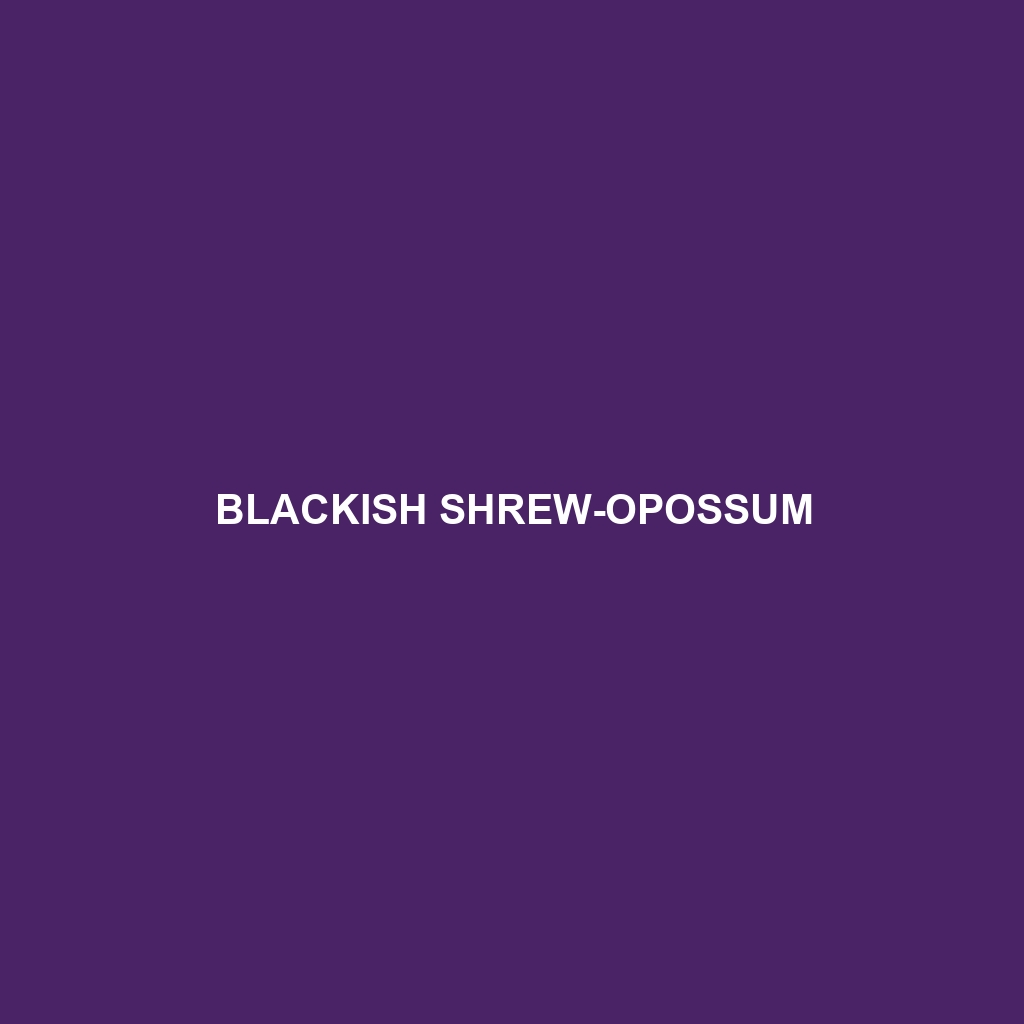Discover the fascinating world of the Pallid Fat-tailed Opossum (Thylamys pallidior), a small, nocturnal marsupial native to South America. With its unique fat-storing tail and pale coloration, this resilient creature plays a crucial role in its ecosystem by controlling insect populations and dispersing seeds. Learn about its critical adaptations, behaviors, and conservation status that highlight the need for continued habitat preservation.
Tag: environmental conservation
Brazilian Gracile Opossum
Discover the fascinating Brazilian Gracile Opossum (Gracilinanus microtarsus), a small, nocturnal marsupial native to Brazil's lush forests. With its delicate build, prehensile tail, and vital role in pollination and pest control, this resilient creature showcases remarkable adaptability. Learn about its behaviors, habitat preferences, and the conservation challenges it faces in a changing environment.
Waterhouse’s Mouse Opossum
Discover the Waterhouse's Mouse Opossum (Marmosa waterhousei), a small, agile marsupial native to Central and South America, known for its unique, mouse-like appearance and nocturnal lifestyle. This resilient creature plays a crucial role in its ecosystem through pest control and seed dispersal, while facing challenges from habitat loss. Learn about its fascinating adaptations and the importance of conservation efforts to protect this remarkable species and its environment.
Anderson’s Mouse Opossum
Discover the fascinating world of Anderson's Mouse Opossum (Marmosa andersoni), a small, nocturnal marsupial native to South America's lush forests. This agile and solitary creature plays a crucial ecological role as both predator and prey, showcasing remarkable adaptations that allow it to thrive in diverse habitats. Learn about its unique physical characteristics, feeding habits, and the conservation challenges it faces in an ever-changing environment.
Andean White-eared Opossum
Discover the Andean White-eared Opossum (Didelphis pernigra), a remarkable marsupial native to the Andean region of South America. With its striking white ear patches and adaptable nature, this nocturnal scavenger plays a vital ecological role, from seed dispersal to controlling insect populations. Learn more about this intriguing creature's unique behaviors, habitats, and conservation status in our latest blog post.
Blackish Shrew-opossum
Discover the elusive Blackish Shrew-opossum (_Caenolestes fuliginosus_), a fascinating marsupial native to the cloud forests of the Andes. With its dark camouflage and nocturnal habits, this small creature plays a crucial role in controlling insect populations while adapting to its high-altitude environment. Learn more about its unique characteristics, ecological significance, and the conservation challenges it faces.
Frosted Porcupine
Discover the fascinating world of the **Frosted Porcupine**, a unique herbivore native to the temperate forests of northern North America. With a distinctive frosted quilled coat and remarkable climbing abilities, this nocturnal creature plays a vital role in its ecosystem, promoting forest growth while skillfully evading predators. Explore their habitat, diet, and conservation status in this insightful blog post.
Kalinowski’s Agouti
Discover the fascinating Kalinowski's Agouti (*Dasyprocta kalinowskii*), a vulnerable rodent native to the lush tropical rainforests of the Amazon Basin. With its striking reddish-brown fur and vital role in seed dispersal, this medium-sized creature not only contributes to forest regeneration but also serves as an important link in the ecosystem. Learn about its habitat, social behaviors, and conservation challenges in our latest blog post.
Greater Capybara
Discover the fascinating world of the Greater Capybara, the largest rodent on Earth, known for its social behavior and unique adaptations. Native to the lush wetlands of South America, these semi-aquatic mammals play a vital role in their ecosystem by managing vegetation and supporting biodiversity. Learn about their habitat, diet, and conservation status in this insightful blog post.
Greater Guinea Pig
Discover the fascinating world of the Greater Guinea Pig (*Hydrochoerus hydrochaeris*), the largest rodent native to South America's lush wetlands. Explore its social behaviors, diverse diet, and crucial role in maintaining ecosystem health, while also learning about its conservation status and unique adaptations that help it thrive in its natural habitat.









